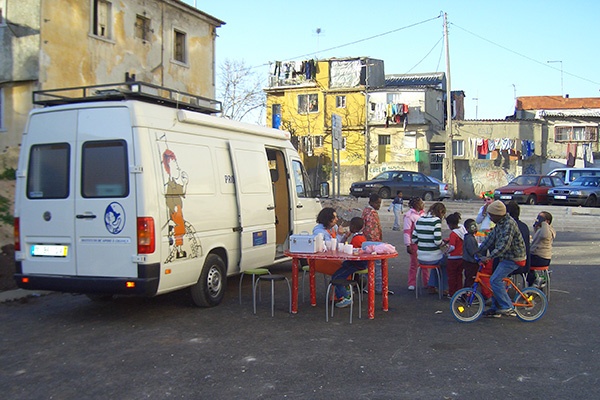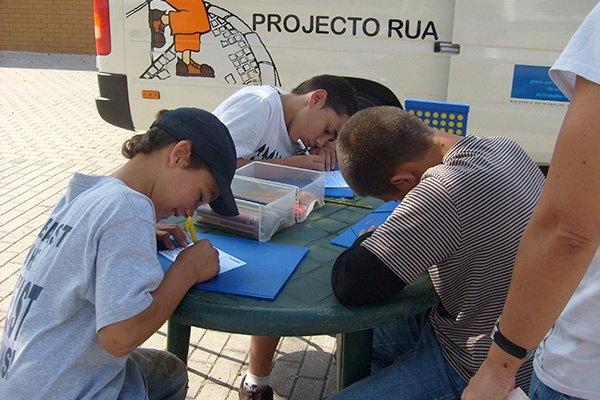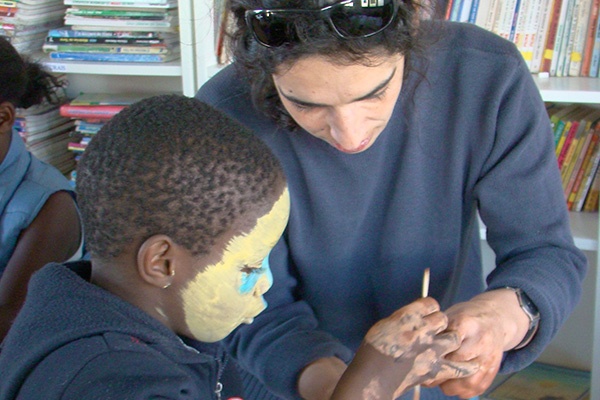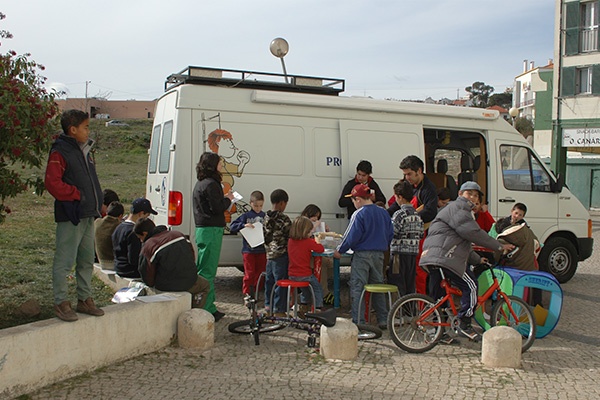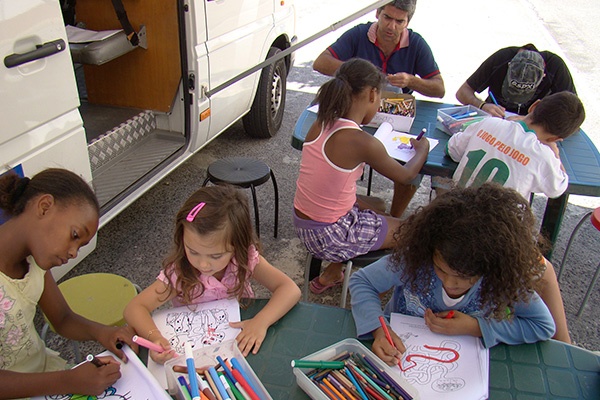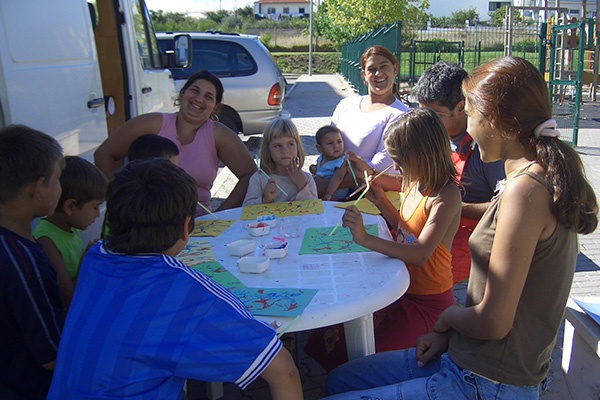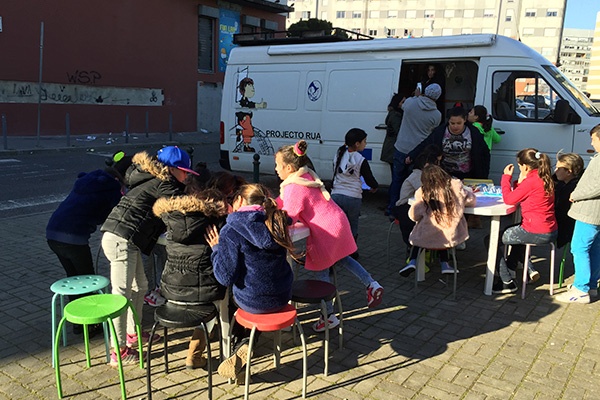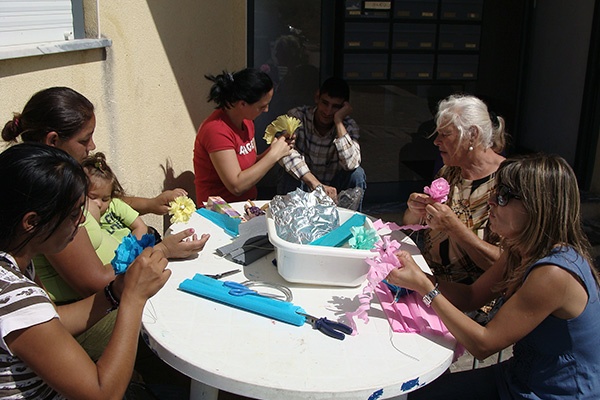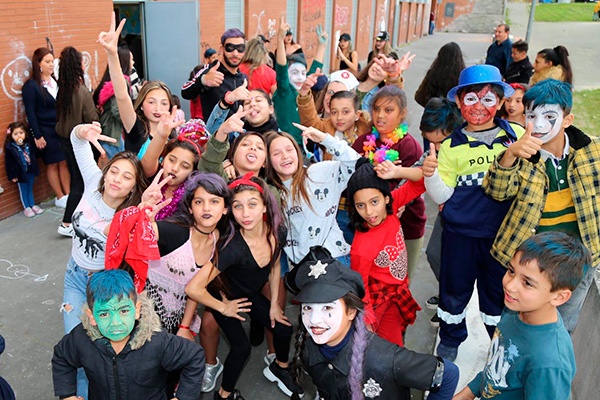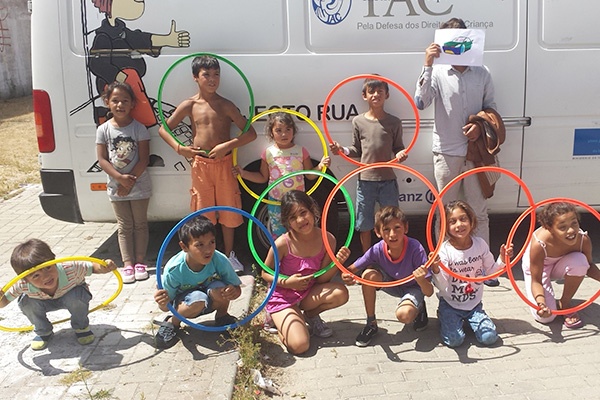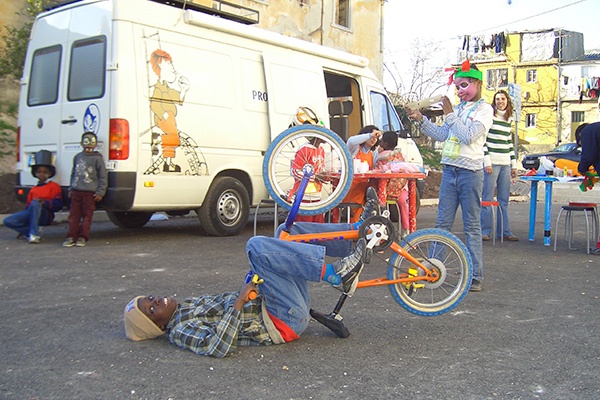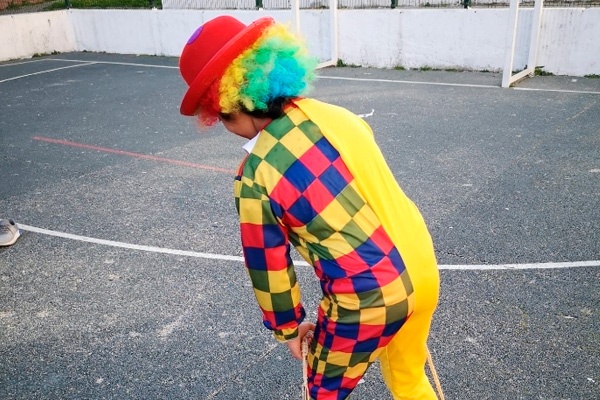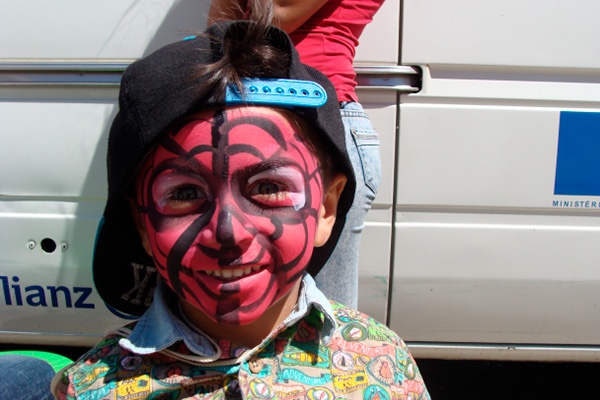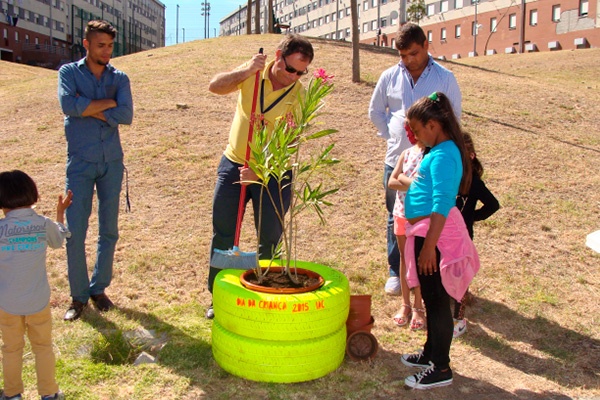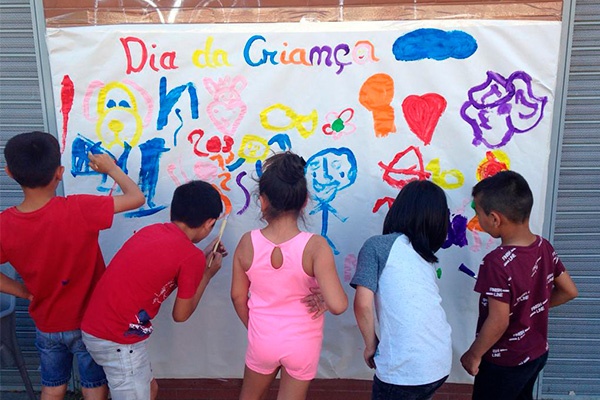Project: Ação Aprender na Rua
Description
The Ação Aprender na Rua Project (Learning on the Street Action) consists of a diverse set of activities, aiming at the development of personal and social skills, in a perspective of the healthy growth of children. It uses as a strategic resource mobile unit of ludic-pedagogical team as support to the implemented activities.
The context where this action takes place – on the street – gives it a character of openness (to the whole community) and flexibility (adapted to the participants), requiring the team to use playful techniques – innovative pedagogical activities to stimulate confidence and motivation in children to address various topics and problems. This action mirrors the methodology of the Street Project “Ir ao encontro e estar com…” (“Meet and be with…”).
The playful nature of this action facilitates the approach and proximity to the child and allows to more easily identify risk situations which will subsequently have to be the subject of a diagnosis with the partner entities. It is frequent to observe children with inappropriate behaviour which are the result of an absence of transmission of affections and values and are reflected in interpersonal relationships. However, after a more thorough diagnosis, serious negligence is frequently identified in terms of meeting the biological and psychosocial needs of children, abuse or exposure to domestic violence.
In this respect, proximity to the families of these children is essential. The approach and monitoring are based on strengthening the motivation and appreciation of their role as parents, respecting their individual rhythm, the process of change, the value of their children, facilitating the understanding of the behaviors manifested and guiding the family to adopt new attitudes towards children.
Area of Intervention
Target Group
Despite the context where it is developed (the street, the neighborhood), which gives it a more open character, the type of developed activities is intended mainly for children of the 1st cycle (between 6 and 12 years).
General Objectives
- To prevent and mitigate risk situations of children uncovering institutional responses and/or in complementarity with existing resources, promoting healthy occupation and motivating them to school attendance.
Scope (National or International)
National
Identification of External Partnerships
The intervention in a community context and the promotion of the Aprender na Rua action, allow the team to identify some situations of children and young people at risk/in danger and for which it is necessary, always together with local partners, to find the most suitable answers/referrals for each situation. The integrated projects assume special relevance here, channeled sometimes into the creation of interinstitutional groups, and in each community where this action has already been, this has always been a priority of this team. The Alfredo Bensaúde neighborhood was no exception either: the IAC helped the constitution and integrated the existing groups, namely the Bensaúde Community Group; the Bensaúde Safety Group and the Interinstitutional Group of Children at Risk. In the first two, the following entities are included: Junta de Freguesia dos Olivais; IAC; Gebalis; SCML; Agrupamento Escolas das Piscinas; Polícia Municipal; CML; Associação de Mulheres sem Fronteiras; Animalife. The third group mentioned is more restricted and only includes the IAC; the SCML and the EB1/JI Santa Maria dos Olivais.
The team also assumes an interinstitutional mediation role, since it is in a privileged position of contact with the population and because not always the relations of partners are guided by harmonious understanding between the parties.
Communication between intervening services and overlapping areas
Area of National and International Cooperation, regarding the Rede Juvenil “Crescer Juntos”.
Implementation Period
The innovative action “Aprender na Rua” was created in 2004, covering several communities (Bº 6 de Maio, Bº Famões, Bº Arroja, Bº Boavista, Bº Qtª da Serra) and is currently being prioritized in Bº Alfredo Bensaúde, parish of Olivais, in Lisbon.
Main Results
From the data collected between 2004 and 2014, there was intervention in 6 communities. This included 1814 children, of whom 249 were children in distress.
From 2015 to 2019 we privileged the intervention in the Alfredo Bensaúde neighborhood. The graph shows the number of children covered during this period (in a systematic/non-systematic/occasional/indirect way and children at risk.
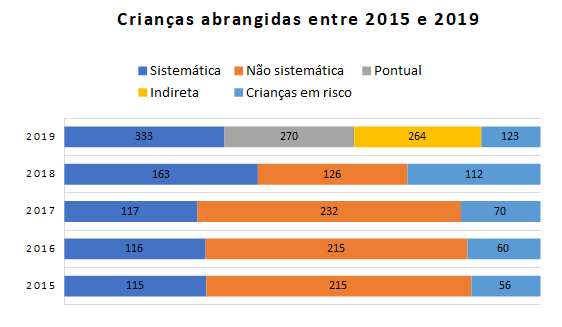
Photo Gallery
